Underwater tourism is opening the ocean up to travellers, offering them the chance to see the marine world that covers 70% of our planet. Read It
Despite being a reasonably experienced scuba diver, I had never seen a “bommie”, something Heron Island in the Great Barrier Reef is famous for. A couple of years ago, the chance to see one of these shaggy column-like mounds of coral finally took me there. My first bommie not only turned out to be a spectacular sight, a miniature self-contained habitat like a tiny underwater island, but was enhanced by a gigantic manta ray gently flapping its wing-like fins, performing an underwater ballet right above it. When a turtle happened to swim by for good measure, the Great Barrier Reef had won me over completely.
Talking to the other divers on the boat, we’d all been drawn to the Great Barrier Reef to see the world’s largest coral formation and its vast variety of ecological habitats and marine species. Not only were we spellbound by its otherworldly beauty, it made us understand the importance of preserving this precious environment.
In recent years, underwater tourism has become increasingly innovative (Credit: Aaron Bull/Getty Images)
Underwater tourism is opening the ocean up to travellers, offering them the chance to see the marine world that covers 70% of our planet. New, high-profile openings – such as the world’s first underwater hotel, the Conrad Maldives Rangali Island, which opened in 2018; the world’s largest underwater restaurant Under in Norway, opened in 2019; and the hot new trend of underwater art galleries, such as 2019’s Ngaro Underwater Sculpture Trail in Australia’s Whitsunday Islands – are all bringing more people into contact with marine sites.
But underwater tourism is hardly a new concept.
Jacques Cousteau invented general-use scuba gear in 1942, and the Professional Association of Diving Instructors, PADI, has issued 27 million diver certifications globally since 1967. According to Scubanomics, there are around 6 million active scuba divers in the world, plus countless snorkelling enthusiasts, who explore the edges of our oceans, diving sunken wrecks, swimming with whales and turtles and even going underwater caving. In addition, coastal resorts have long offered trips in glass-bottomed boats.
You may also be interested in:
• Is this the future of underwater exploration?
• Norway's dramatic underwater restaurant
• Can science and tourism save the reef?
More recently, however, a shift in thinking has brought scuba-like adventure to people who are not skilled divers or swimmers or don’t have the time or means to earn diving certification. Experiences such as Seawalker on Green Island in the Great Barrier Reef allow people to submerge while wearing a large glass helmet. Dressed in a protective suit, “divers” are gently lowered to the ocean floor, where they quite literally walk upright on the sand, connected by tubes that allow them to breathe normally while underwater.
Submersible rides may potentially be the future of underwater exploration (Credit: Matjaz Slanic/Getty Images)
Then there are submersible rides, which offer tours along reefs of some of the world’s most interesting islands and coastal regions, from Hawaii to Mauritius. These can range from larger submarines for groups of tourists to super-luxurious private subs, such as the ones by Deepflight that operate in the Four Seasons Resort in the Maldives. These environmentally friendly and air-conditioned crafts, with space for two people plus a pilot, have individual viewing domes that allow for an exclusive up-and-close experience.
Although many believe these sleek submersibles may be the future of underwater exploration, since no scuba or swimming experience is necessary – plus the battery-operated and low-noise-level submersibles mean the experience is as sustainable as possible – they often carry a high price tag. The Deepflight, for example, costs $1,500 per couple for an hour’s excursion, which puts the experience out of reach of much of the general public.
“While underwater tourism invokes evocative images of deep-sea fantasies, these experiences are in reality few and far between,” said Dr Hayley Stainton, UK-based tourism academic and author at Tourism Teacher. “They are also very expensive. I do think that there is a market for underwater tourism. I just believe that it will be limited to the wealthy and the few.”
Citizen science initiatives help monitor the marine environment and potential tourism impacts (Credit: Tunatura/Getty Images)
Patricia Rodiles Martinez, Institutional Development & PR Manager of Les Roches, who held the first Space and Underwater Tourism Universal Summit in 2019, disagrees. “As demand increases over time, the costs associated will also come down, making it more and more accessible for all. This is what happened with the first airplanes, cruises and hotels.”
Whether or not submersible rides will become mainstream, all these innovative underwater experiences have an important secondary benefit: they’re educating a new audience on the need to care for the ocean, which is struggling with threats such as coral bleaching due to global warming, over-fishing and pollution. The Covid-19 pandemic, and the visible signs of environmental relief when the world was in lockdown, is another timely reminder of the need to travel and live more sustainably.
New underwater projects are taking this on board, working hand in hand with conservationists and marine biologists to make the travel experience not only fun but educational, by raising awareness of the threat to the oceans and its habitats. While dive centres highlight the threats to their dive grounds, research centres, in particular on the Great Barrier Reef, are showcasing their research on topics such as coral bleaching, the effects of plastic waste and reef destruction. They’re asking visitors to take away not only an enjoyable experience but vital knowledge, too.
The Ngaro Underwater Sculpture Trail in Australia’s Whitsunday Islands showcases six art installations (Credit: Riptide Creative)
Citizen science initiatives, from mapping seaweed species on the Washington State coast to tracking sharks and turtles on the Great Barrier Reef allow travellers and volunteers to help monitor the marine environment and potential tourism impacts, and provide critical data for research. They also have the side benefit of spreading the responsibility of protecting our underwater world to the entire community.
There are ways to develop underwater tourism in a sustainable manner
And, based on the success of other underwater sculpture parks, such as the Cancun Underwater Museum of Art in Mexico, which opened in 2010 as part of the Cancun Climate Summit, there’s a move to combine underwater tourism with art tourism to attract a new kind of traveller, who are not solely scuba divers or marine life enthusiasts but who will take away a new interest in the oceans with them.
The Great Barrier Reef’s Ngaro Underwater Sculpture Trail, which opened in 2019, showcases six art installations, such as a large turtle, a local giant wrasse and a flight of manta rays, that can be explored via scuba-diving tours or by boat, as they’re not too deeply submerged for water-shy visitors to see. The trail was initially set up after the devastation of much of the reef after Cyclone Debbie in 2017, and is not only part of an ongoing reef restoration project, but also aims to start conversations about marine conservation through its subjects, such as the manta ray migration.
Australia’s Museum of Underwater Art tells the story of the plight of the Great Barrier Reef (Credit: Jason deCaires Taylor)
A little further along the Queensland coast, off Townsville, another art project is due to be inaugurated in 2020. MOUA, Australia’s first Museum of Underwater Art, is spread across four sites, only one of which will be accessible solely by scuba divers, and showcases installations by British sculptor Jason deCaires Taylor. The attractions tell the story of the plight of the reef and the oceans through the selection of the art pieces and accompanying signage. One example is the Coral Greenhouse, located on the John Brewer Reef. The largest of the MOUA installations, this underwater building is filled with 20 so-called “reef guardians”, statues depicting scientists nurturing coral and researching in a laboratory setting, prompting a discussion about reef restoration and coral propagation.
The attractions do not have to be contemporary or new, either. In Kas, Turkey, numerous underwater archaeological sites are drawing tourists to the area’s sunken cities, amphorae fields and Lycian rock tombs; while off the coast of Haifa, Israel, a Neolithic village attracts divers with its oldest-known coastal defence wall.
With so many historical, natural and artistic attractions under the seas, it is up to local governments and tour operators to ensure the sites are safely managed in an environmentally friendly and beneficial manner. The danger is that a site becomes too attractive and crowds will destroy the natural habitat. Tour boats, walkways and excursions need to be monitored and forced to adhere to strict guidelines. Even aware scuba divers can inadvertently harm the very sites they have come to enjoy. Studies into sustainable tourism growth by groups such as by Unesco have shown the solution lies with educating and empowering local governments and communities to oversee infrastructure developments, monitoring systems and creating strict local legislations.
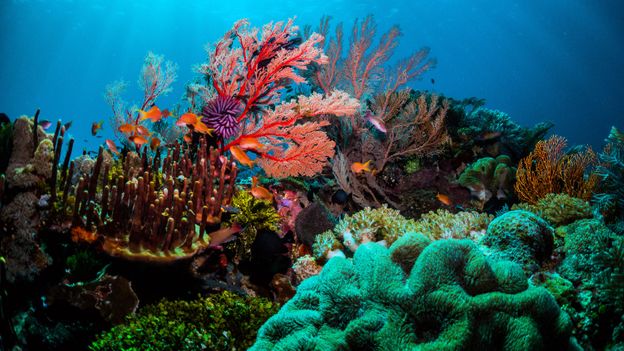
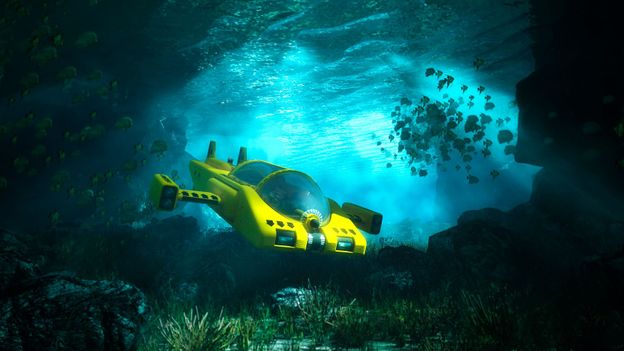
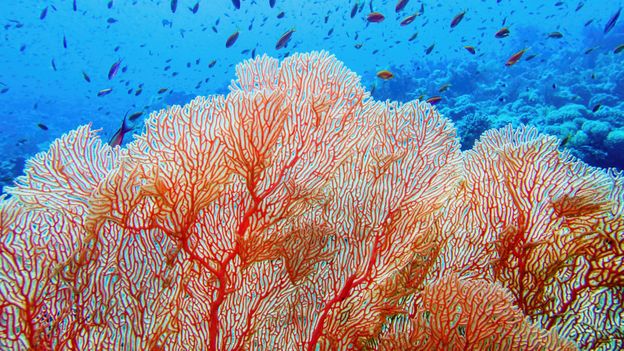
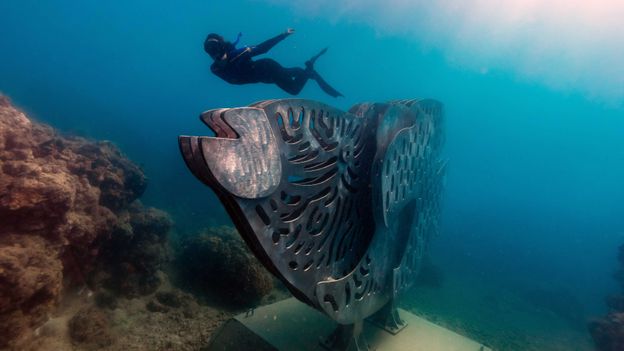
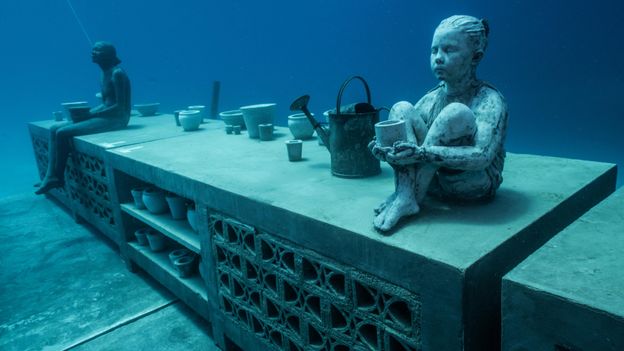
Comments
Post a Comment